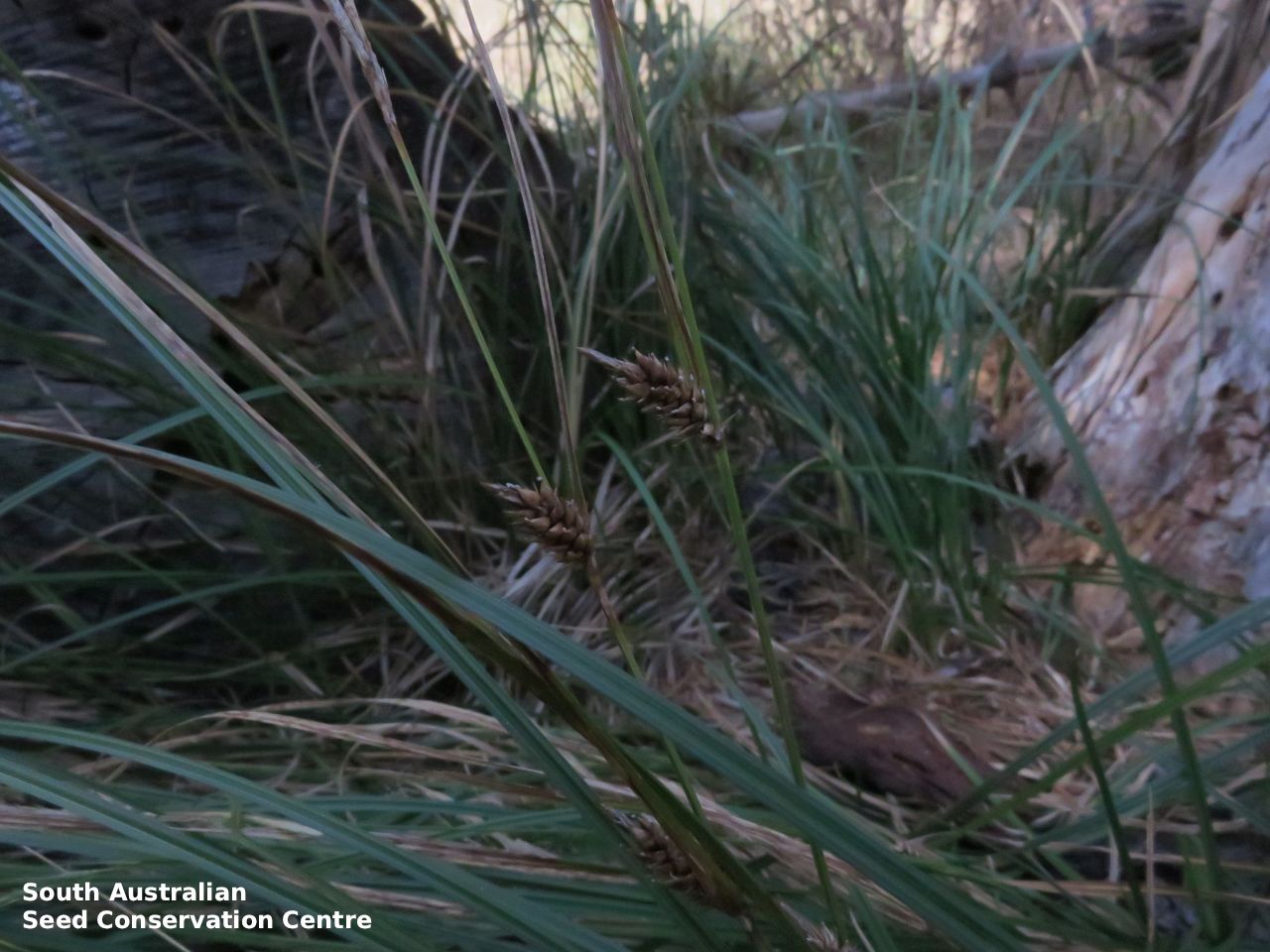
















Botanical art
Prior names
Carex pumila
Etymology
Carex is the classical Latin name for sedge, perhaps from 'carere' meaning to be absent, as the upper spikes are staminate (male) and do not produce seeds. May have been used by Virgil for plants in this genus and derives from ancient Greek 'keiro' meaning to cut, referring to the sharp edge of leaf margins. Bichenoviana possibly name after the town of Bicheno in Tasmania where Gunn might have collected the type specimen from.
Distribution and status
Found in the Flinders Ranges, Mount Lofty Ranges and the South-east in South Australia, growing in seasonally moist places such as stream banks, on sandy to silty soils. Also found in New South Wales, Victoria and Tasmania. Native. Common in South Australia. Common in the other States.
Herbarium regions: Flinders Ranges, Northern Lofty, Murray, Southern Lofty, South Eastern, Green Adelaide
NRM regions: Adelaide and Mount Lofty Ranges, Northern and Yorke, South Australian Arid Lands, South Australian Murray-Darling Basin, South East
AVH map: SA distribution map (external link)
Plant description
Loosely tufted sedge with long-creeping rhizomes and triangular stems. Leaves exceeding culms, to 60 cm long and 8 mm wide with regular antrorse prickles on the leaf margins, sheath dark yellow-brown, occasionally red-tinged. This species is considered the inland counterpart of C. pumila, from which it differs by having an irregularly blunt prickles on the margins of leaves and bracts. Inflorescence erect, narrow, often longer than the culm with few to numerous spikes clustered or solitary at nodes. Spikes sessile, erect at maturity, to 5 cm long with upper 3–15 spikes male, lowest 1–7 spikes female or androgynous. Glumes obtuse to retuse or acute, mostly shortly mucronate, dark to very dark red-brown, with whitish margins near apex. Flowering between October and February. Fruits are dark brown, clusters of erect heads, each containing numerous individual fruit. Seeds are broad-ellipsoid, trigonous in cross section, yellow-brown to red-brown nut, covered by a thick corky layer (utricle) that is yellow-brown, usually tinged dark red-brown with 2 pointed beaks. Seed embryo type is capitate.
Seed collection and propagation
Collect seeds between December and April. Collect fruits either by running your hands along the heads when mature seeds will come-off easily, or cut whole heads that are brown, containing dark hard seeds. Place the heads in a tray and leave to dry for one to two weeks. Then rub the heads with a rubber bung to dislodge the seeds. Use a sieve to separate any unwanted material. Store the seeds with a desiccant such as dried silica beads or dry rice, in an air tight container in a cool and dry place. Seed viability is usually high.
| Location | No. of seeds (weight grams) | Number of plants | Date collected | Collection number Collection location | Date stored | % Viability | Storage temperature |
|---|---|---|---|---|---|---|---|
| MSB | 2,400 (3.2 g) | 2-Apr-2007 | RJB71357 Southern Lofty |
Number of plants: This is the number of plants from which the seeds were collected.
Collection location: The Herbarium of South Australia's region name.
% Viability: Percentage of filled healthy seeds determined by a cut test or x-ray.